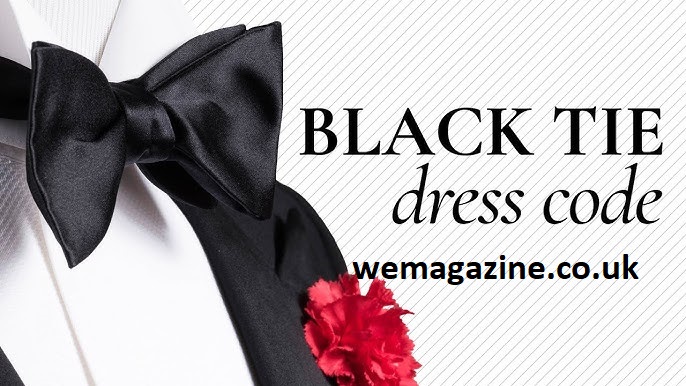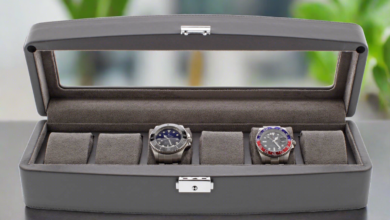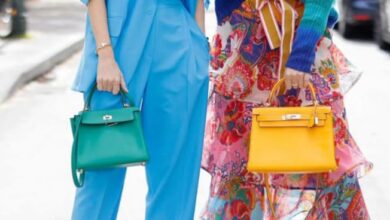Black-Tie Dress Code

Understanding the Black-Tie Dress Code: A Clear & Modern Guide
When you receive an invitation marked Black-Tie Dress Code, it can raise questions—What exactly should you wear? How formal is formal? This guide breaks down the meaning, history, and practical expectations of the Black-Tie Dress Code so you can arrive confidently and appropriately dressed.
What Does the Black-Tie Dress Code Mean?
The Black-Tie Dress Code is a formal evening dress standard traditionally worn after 6:00 PM. It represents elegance, sophistication, and polished dressing, often required at weddings, award ceremonies, charity galas, and high-profile events.
While it’s not as strict as “white tie,” it still follows clear guidelines.
Key Elements of Black-Tie Dress Code for Men
1. The Tuxedo
A tuxedo is the foundation of men’s black-tie attire. Essential elements include:
- A black or midnight-blue jacket with satin lapels
- Matching trousers with a satin stripe
- A crisp white formal shirt
2. The Bow Tie
A black bow tie—usually silk—is the classic choice.
Pre-tied options exist, but many prefer the authenticity of a self-tie.
3. Shoes
Traditional footwear includes:
- Black patent leather Oxfords
- Well-polished black dress shoes
4. Accessories
Men often complete the Black-Tie Dress Code look with:
- Cufflinks
- A black cummerbund or waistcoat
- A pocket square for subtle sophistication
Black-Tie Dress Code for Women
1. Evening Gown or Formal Dress
Women following the Black-Tie Dress Code typically wear:
- A floor-length gown
- A sophisticated cocktail dress (for certain modern events)
- A chic formal jumpsuit (occasionally acceptable at contemporary ceremonies)
2. Footwear & Accessories
To elevate the look:
- Elegant heels or dressy flats
- Statement jewelry (but not overly flashy)
- A clutch or evening bag
Modern Interpretations of Black-Tie Dress Code
Today, the Black-Tie Dress Code has evolved slightly. Some events allow creative expression through color, textures, and contemporary silhouettes, provided the outfit remains formal and refined.
Examples of Modern Touches
- Velvet tuxedo jackets
- Metallic or jewel-tone gowns
- Sleek tailored jumpsuits
- Minimalist fashion with clean lines
Common Mistakes to Avoid
Even with flexibility, a few things remain off-limits:
- Casual clothing like jeans or t-shirts
- Sneakers or casual sandals
- Loud prints or overly revealing outfits
- Daywear fabrics like cotton or linen
Why the Black-Tie Dress Code Still Matters
The Black-Tie Dress Code continues to be a timeless standard because it:
- Sets a unified tone for formal gatherings
- Honors tradition and elegance
- Creates a sophisticated environment
- Encourages guests to dress with intention
Final Thoughts
Understanding the Black-Tie Dress Code ensures you look polished, confident, and event-appropriate. Whether you choose a classic tuxedo, a graceful gown, or a modern twist on formalwear, the goal is the same: refined elegance. With the right outfit, you’ll not only fit the dress code—you’ll stand out for all the right reasons.
Below is a unique, easy-to-read FAQ section that naturally includes the keyword Black-Tie Dress Code without plagiarism.
FAQ: Understanding the Black-Tie Dress Code
1. What does the Black-Tie Dress Code mean?
The Black-Tie Dress Code is a formal evening dress standard that requires elegant attire such as tuxedos for men and floor-length gowns or sophisticated formal dresses for women.
2. Can I wear a suit instead of a tuxedo for a Black-Tie event?
A classic tuxedo is preferred, but a high-quality black suit may be acceptable at some modern events. However, it should be very formal, paired with a white dress shirt and a black tie or bow tie.
3. Do women have to wear a long gown for Black-Tie Dress Code events?
Traditionally yes, but modern interpretations allow for chic cocktail dresses or tailored jumpsuits—as long as the overall look remains polished and formal.
4. What color should I wear to a Black-Tie event?
Black is standard for men’s tuxedos, while women can wear almost any rich or elegant color. Neutral tones, jewel colors, and metallics are all popular choices.
5. Are accessories important for the Black-Tie Dress Code?
Yes. Accessories such as cufflinks, formal shoes, minimal jewelry, and elegant evening bags help complete the refined appearance that the Black-Tie Dress Code expects.
6. What shoes should I wear for a Black-Tie event?
Men should wear black patent leather or polished formal dress shoes. Women should opt for elegant heels or dressy flats that complement their outfit.
7. Can I wear a watch with Black-Tie attire?
A sleek, minimal dress watch is acceptable. Sporty or digital watches do not match the formality of the Black-Tie Dress Code.
8. Is a pre-tied bow tie okay for a Black-Tie Dress Code?
While a self-tied bow tie is more traditional, a high-quality pre-tied bow tie is acceptable if it looks neat and matches the formal style.
9. What should I avoid wearing to a Black-Tie event?
Avoid casual clothing such as jeans, sneakers, polo shirts, or sandals. Also skip overly flashy prints or revealing outfits, as they break from the formal nature of the Black-Tie Dress Code.
10. What time of day is the Black-Tie Dress Code appropriate?
Black-tie attire is traditionally worn for evening events, usually after 6 PM.




